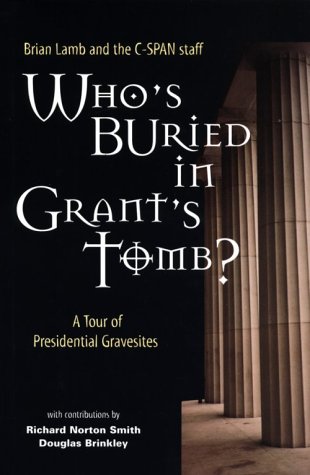Famous last words: 'Tis well. I wish you to understand the true principles of the government. I wish them carried out. I ask nothing more. The nourishment is palatable. Which three famous people uttered one of these phrases on their deathbeds? (Hint: they all served as president of the United States). The answers to these and many other questions about the last days of U.S. presidents appear in Who's Buried in Grant's Tomb? To mark its twentieth year of broadcasting, C-SPAN presented a special television series, American Presidents: Life Portraits, which focused on one president each week and visited sites related to each president--their homes, libraries, gravesites, or other significant places. The project resulted in the most comprehensive video record of the lives of the 41 men who served as president of the United States. As a complement to this project, Who's Buried in Grant's Tomb? provides a guide to all 41 presidential gravesites, including sites selected for living presidents. Each chapter focuses on one president and includes birth and death dates; the time, place, and cause of death; final words; location of the gravesite and price of admission. Photos of each gravesite and original oil portraits of each president supplement the narrative, which tells about the circumstances of each man's death, funeral services, and last wishes. Starting at the end of each president's life, Who's Buried in Grant's Tomb? offers a fascinatingly different approach to these famous men. The book supplies some interesting trivia, such as the last words of George Washington, William Henry Harrison, and Millard Fillmore quoted above, and highlights some neglected historical moments, including the massive crowd of 60,000 people who marched in Ulysses S. Grant's funeral procession, as well as early medical advice to presidents who suffered from heart disease or cancer. Who's Buried in Grant's Tomb? can also be used as a tourbook to visit the sites and learn more about the 41 U.S. presidents. This 256-page book includes a foreword by Richard Norton Smith and an afterword by Douglas Brinkley. A wintry mix of snow, sleet, and rain covered Mount Vernon on December 12, 1799. George Washington, retired less than three years, made his usual inspection tour of the estate that morning. The following afternoon, the former president began to develop a sore throat. In the early morning hours of December 14th he awoke, feverish and having difficulty breathing. As the day wore on, Washington's lungs and throat continued to shut down. Doctors were summoned, who opened and bled the patient's veins several times in a futile effort to free his body of infection. The physicians considered performing a tracheotomy or a transfusion of lamb's blood, but Washington's condition was too weak. Nonetheless, he remained in control to the end: he gave specific orders to his secretary not to allow his body to be interred less than three days after his death. As he was taking his own pulse, George Washington died. He was 67 years old.--from the entry on George Washington Proceeds from the sale of this book will go to the C-SPAN Education Foundation
- ISBN10 1881846083
- ISBN13 9781881846086
- Publish Date 16 February 2000
- Publish Status Out of Stock
- Out of Print 16 January 2011
- Publish Country US
- Imprint Johns Hopkins University Press
- Format Hardcover
- Pages 305
- Language English
